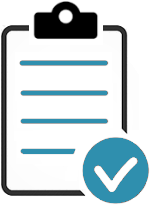ISO 9001 requires continual improvement of your products and/or services and the effectiveness of the QMS.
Continual improvement draws together various aspects of the Quality Management System:
Contents
- What Drives Continual Improvement
- How To Identify Improvement Opportunities
- Which ISO 9001 Requirements Are Effected by Continual Improvement?
- Should I Document our Continual Improvement Process?
- Continual Improvement Procedure
- What Should You Include In Your Continual Improvement Procedure?
- Measuring Continual Improvement Effectiveness
- Example Continual Improvement Process
- Auditors will Look for Continual Improvement
- Control of Improvement Procedure [Template download]
Our Control of Improvement Procedure is proven to work.
Continual improvement is driven by the objectives set by Top Management. As a minimum, quality objectives should address:
There is no requirement that the organization should set objectives for improvement of all its processes at any one time. It would be unrealistic to expect an organization to make progress in all potential improvements simultaneously.
5 Ways ISO 9001 improves quality.
Each improvement will require the commitment of resources, which should be prioritized by Top Management, especially if investment is required.

Continual improvement is more of a philosophy than a process or system. It requires everyone as a participant to adopt, as part of their normal work, a mind-set of continuously looking for ways to improve processes and systems, i.e. to make them more efficient and effective.
Inputs for improvement opportunities are obtained from the following sources:
Opportunities for improvement may also be identified on a special project basis. The following are examples of such projects:
It is not a mandatory requirement to document your continual improvement process. However, you should always look to adequately define and control any operational processes that stimulate the betterment of your quality management system.

The purpose of the Control of Continual Improvement Procedure is to define your organization’s process for establishing a philosophy of continual improvement throughout our business, which is driven by goals documented in the corporate objectives and policies.
Opportunities for improvement are identified and translated into improvement projects.
Our Control of Improvement Procedure is proven to work.
Develop and implement a Control of Improvement Procedure that defines the roles and responsibilities for:
Opportunities for improvement in operations and processes are identified by functional managers on a continual basis from daily feedback on operations and periodic management reviews.
Opportunities for improvement of products and services are identified mainly by the Sales & Marketing Manager and the Engineering Teams.
Once a solution has been developed, measures and metrics will identify what can be tracked and used to determine whether or not the solution is effective.
Information from these metrics can put in place the structure for continual improvement of the action/solution taken. After the implementation of the solution has begun, the metrics are monitored on a regular basis.
The metrics will reveal whether or not the objectives of the solutions are being met.

External Certification Auditors will look for evidence that your organization is analyzing data from process monitoring, and is then taking the results forward for evaluating process efficiency and/or improving process output.
One point that should be specifically examined is the consistency of the way in which the improvement of any one process contributes to meeting the overall objectives, so as to ensure that this will not conflict with the achievement of other objectives.
Updated: 26th February 2022
Author: Richard Keen

Richard is our Compliance Director, responsible for content & product development.
But most importantly he is ISO's biggest fanboy and a true evangelist of the standards.
Learn more about Richard

Don’t Try to Manage It All Alone!
Our ISO Auditors and Quality Manager Trainers have been in this industry for years, and since 2002 we’ve been providing thousands of small businesses and large corporations with the tools they need to get certified.
Instead of trying to create everything you need to follow this process from scratch, use ours. We have procedures, templates, checklists, process maps, forms and gap analysis tools to help you control your documented information without missing a single input or output.
Before you invest all the hours reinventing the wheel, before you spend countless dollars outsourcing the task — try our templates.
| QMS ISO 9001 |
EMS ISO 14001 |
OH&S ISO 45001 |
|
Control of Improvement Procedure The purpose of this procedure is to define your organization’s process for establishing a philosophy of continual improvement throughout our business, which is driven by goals documented in the corporate objectives and policies. Opportunities for improvement are identified and translated into improvement projects. Forms & Reports also included:
>> Free Download - Control of Calibrated Equipment Procedure - this will give you a good idea of what to expect when you purchase the procedure. |
$19 USD |
Pay by Credit Card, Debit Card, PayPal or Apple Pay.


|
Please read our Money Back Guarantee. |
Bought by Small Businesses and Large Corporations our templates have been sold online and CD since 2002.
Used by:
The Templates are used by first-timers following our step-by-step, clause-by-clause guidance documents; and experienced Quality Managers wishing to streamline and improve their existing documentation.
The application of our templates is scalable and generic; regardless of the size and type of organization. The elements that form the quality management system are the same.
1. Our customizable templates save you time and money by offering a streamlined process to create your quality documentation
2. They’ve got everything you need in one simple template
3. Proven to work our templates have helped thousands of businesses big and small achieve certification
4. Documents use styles to make reformatting and rebranding a breeze
5. Our templates are generalizable for any industry or sector. The application of our templates is scalable and generic; regardless of the size and type of organization.